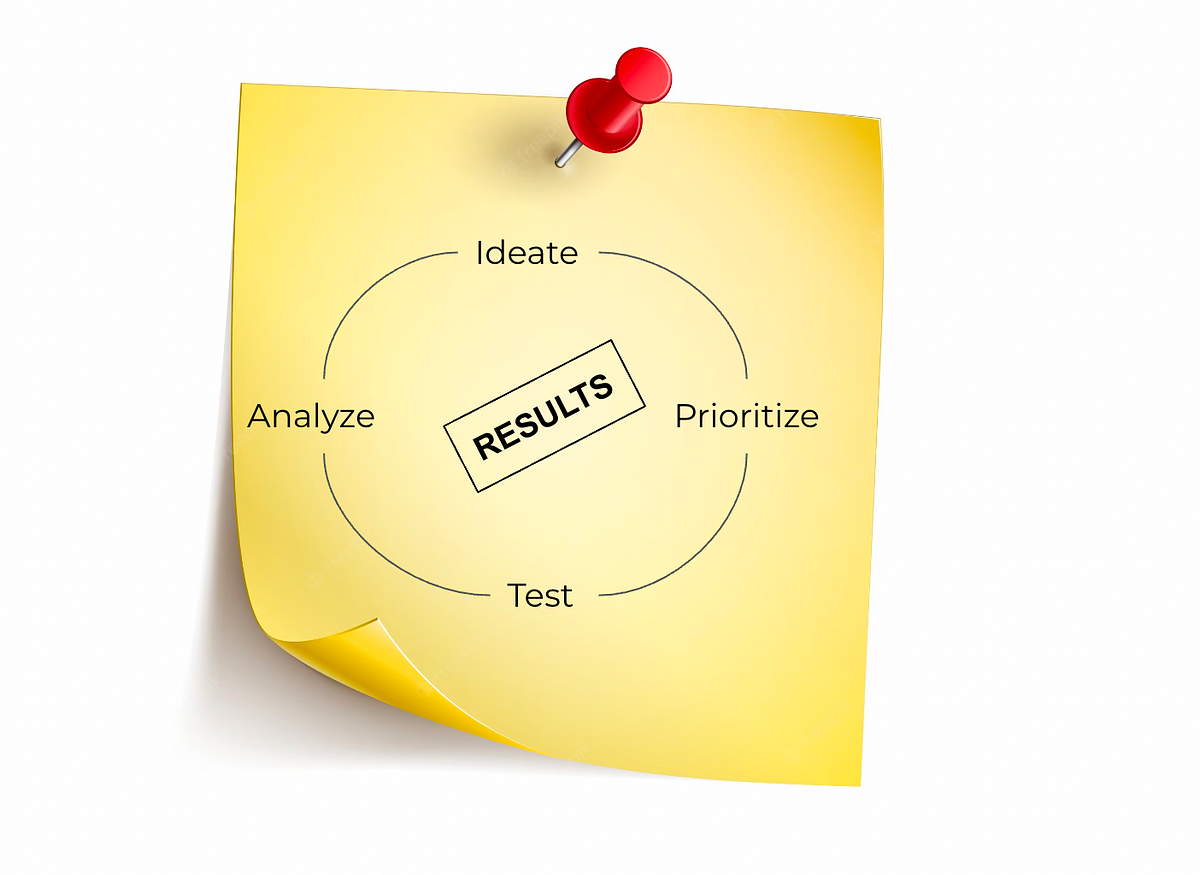
As far as credentials go, Sid Apaya has a storied trajectory: worked as an Enterprise Transformation Lead at Nestlé, Brand Manager at Kraft Foods, General Manager at JM Smucker Co., Partner in Venture Accelerator EVA, and Global Director of Innovation at TerraCycle.
Such experiences building and growing businesses have taught Sid timeless lessons on business innovation, growth strategies, and experiments that we had the pleasure to listen to (and learn from) during a fireside chat with our community members.
Here are some highlights that every business looking to successfully adopt growth/innovation/experimentation as their roadmap should keep in mind:
While there are many variables to consider, innovation is, fundamentally, a process. It’s an iterative framework that never stops at any stage of a business, with the aim of creating measurable long-term value for the organization through the improvement of existing business lines, and optimization of new revenue streams.
Sid breaks down four main different buckets of innovation:
I) From zero to MVP (Minimum viable product);
II) From MVP to PMF (Product-market-fit);
III) From PMF to Scale and Traction;
IV) Unlock Enterprise Value;
Each of these stages will offer different challenges and require different processes, but, the element that is fundamental to them all is experimentation!
To unlock huge transformational value, experimentation is needed and the biggest challenge to companies embracing experimentation is human bias.
Even if they learn the methodology, human bias, and leadership support is currently the biggest challenge for innovation to succeed.
The first thing is to start with a pilot group and expand from there. Bring like-minded curious people to that pilot team and make sure you focus on low-hanging fruit to achieve quick wins at first, before moving to more audacious projects.
If there’s no buy-in from the leaders at the top, growth, and innovation will not succeed. The C-level must be onboard.
Second, the challenge that limits growth or innovation in the majority
of organizations is the lack of decentralized experimentation at scale.
You only have to look to Booking.com, Amazon, and Haier to see the
significant enterprise value they have unlocked in a short period of
time. While much has been written about Amazon or Booking.com,
very few people know about Haier. The $35 Billion appliance maker
has grown by 23% a year and has created more than $ 2 billion in
revenue from new enterprises. You can read more about how they
unlocked enterprise value through experimentation and bias avoidance
here.
One of the things that hold innovation back the most is bureaucracy. And traditional or family businesses may have a lot of that. In order to innovate with success, they must overcome that challenge first, giving the innovation/growth team the flexibility to test, experiment, to try — that’s the only way they will figure out the (current) unknown. To bypass this, a few elements should be addressed:
- Team: focus on building a separate team that can execute as a stand-alone and not dependent on the rest of the organization’s rules.
- Incentive System: innovation and growth teams are not focused on performance or efficiency, they are focused on long-term results, they are dealing with uncertainty, and your incentive structure should be aligned with that.
- Process: the step-by-step framework that will guarantee the best outcome out of their actions
- Goal: innovation is measurable and success should be defined early on. There will be failures along the way, that’s why it’s important to define the promised land before starting sailing.
Example: Amazon STT (single-threaded teams). When Bezos wanted to create their digital arm, he asked Andy Jassy to be the owner of the project and to work with 10 other members in a separate environment with a clear success KPI.
AWS eventually became one of the most lucrative areas of the business and Jassy went on to succeed Bezos as CEO.
The wrong way is to do it without being result-oriented.
At first, the project won’t have all the KPIs and Dashboards and Metrics in place. But having a measurement of success is fundamental. That’s what will help integrate that innovation project into the rest of the company once they succeed — that’s what guarantees alignment between the innovation labs and the efficiency-focused departments of the business.
There are two kinds of failure: the failure of the project, which is usually the result of the lack of support from the executive team or the lack of a clear success KPI, and the failure of the experiment, which is simply part of the process. Since the team will be facing the unknown, some failures will certainly happen.
As the innovation/growth teams ******, together with the rest of the company, they will approach the learning curve in a different way, and understand that predictions are never 100% certain.
Culture is critical to growth. Being open about lessons learned and
taking the time to share learnings is one aspect of a good culture. The
others are speed to market and an experimentative culture.
Surprisingly many startups and enterprises do not necessarily apply
these critical aspects of their overall approach to growth need to
consider this in order to become successful.



